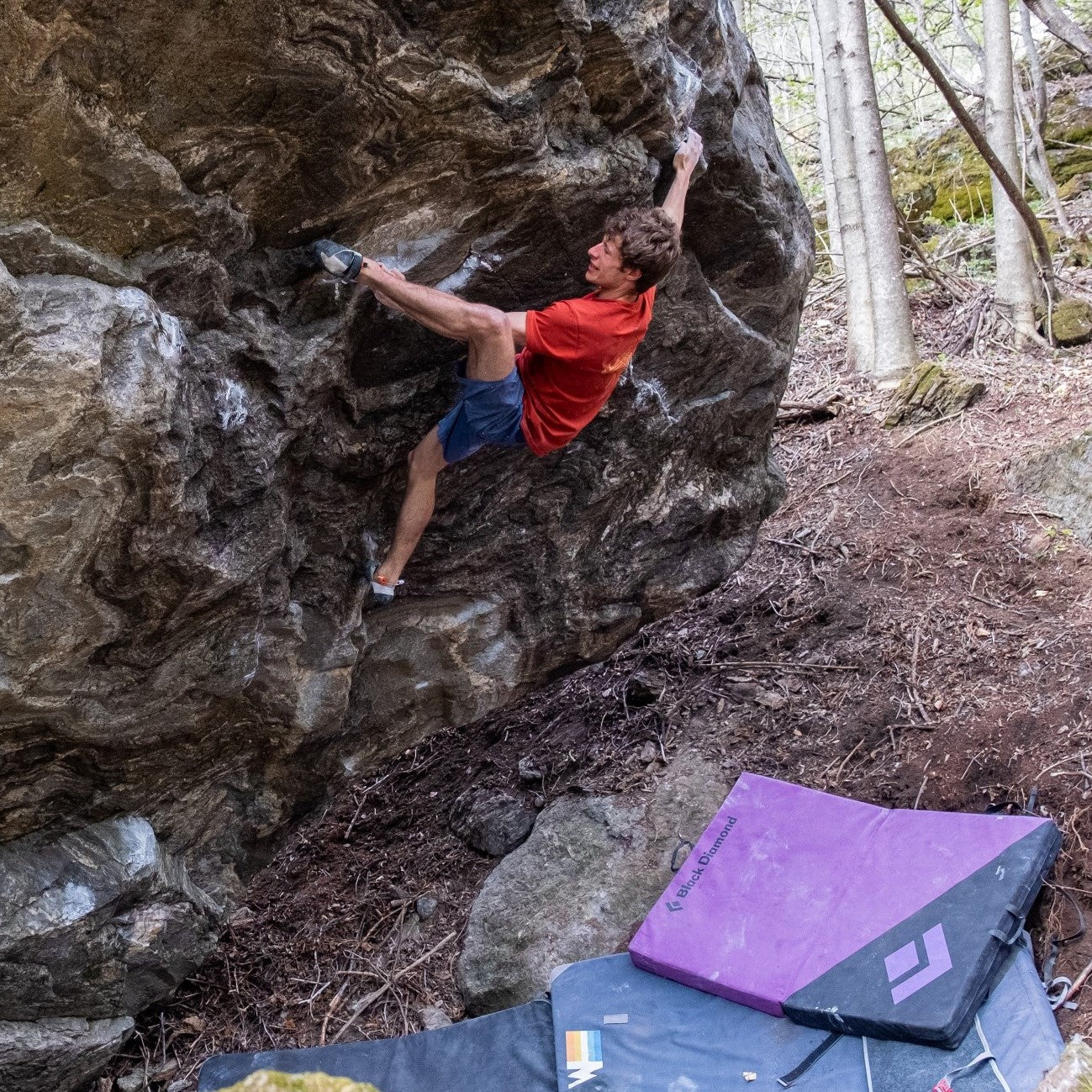
DEEP INTO THE COMMUNITY
Black Diamond Athlete Angela Hawse is a guide for change.
Add 100 EUR more to quality for free Shipping!
€0,00 EUR











It's happened to us all before—you go zipping down a rap line, get to the ledge, and grab the belay device to remove it from the rope, only to burn the crap out of your hand. Belay devices can get hot, but can they get hot enough to melt your rope, or maybe the sling you're using to anchor in with? This is the question that keeps Black Diamond's Content Manager, Jonathan "JT" Thesenga, constantly hovering around the QC lab, asking if we've determined whether or not a hyper-hot ATC could get him killed when rapping off a multi-pitch route. I answer with what every climber should know: you should always be clipped in with two independent slings, and use nylon if you're paranoid, since it has a higher melting temperature than Dyneema/Spectra/Dynex.
But his questions got us thinking, so we decided to put a quick battery of tests together to get some real data to help put him at ease, and more importantly keep him out of the lab.

This also shows that the flat webbing and Kevlar cord could withstand higher temperatures than the 10mm Dynex, with the nylon supertape performing even better still. So the fears of having a warm belay device just come in contact with a sling causing it to sever are starting to fade.
TEST #4: At what temperature does a Dynex sling actually start to melt?
Seeing as we weren't really having much luck melting slings, we decided to slowly increase the temperature on our oven until we could visibly see a Dynex sling start to melt. A few things to remember:

We didn't really notice any visible signs of melting until the oven was stable at about 160 °C (320 °F):
After we let the sling cook for a while at 165 °C (329 °F), we decided to break it in the tensile tester and attained a result of 540lb (about 11% of the rating 22kN [4946 lb]). Better than we expected, actually, considering the melted mess that it was.
Conclusions
As usual this is far from comprehensive. There are many more tests we could dream up and investigate, but what did we learn from our limited testing?



Follow BD Athlete Yannick Glatthard deep into the Swiss Alps as he shares his home...
Follow BD Athlete Yannick Glatthard deep into the Swiss Alps as he shares his home mountains with close friends.

Follow Dorian Densmore and Mya Akins for another winter season of steep Alaskan spines, backyard...
Follow Dorian Densmore and Mya Akins for another winter season of steep Alaskan spines, backyard couloirs, and deep adventures in the mountains.


Watch BD Athlete Alex Honnold throw down on some hard trad high above Tahoe.



In 2012, filmmaker and photographer Ben Ditto, and professional climber Mason Earle equipped an immaculate...
In 2012, filmmaker and photographer Ben Ditto, and professional climber Mason Earle equipped an immaculate line in Tuolumne’s high country. But their attempts to free the route were thwarted when Mason’s life changed drastically. With the help of Connor Herson, Ditto and Mason found a way to keep the dream alive.


Watch and learn as our Field Test Coordinator runs you through a step by step...
Watch and learn as our Field Test Coordinator runs you through a step by step process of trimming and setting up any STS-style Black Diamond skin.


Every climber has a few lines they dream about. Whether inspired or haunted—or sometimes both—these...
Every climber has a few lines they dream about. Whether inspired or haunted—or sometimes both—these lines can push us beyond what we thought we were capable of, in turn teaching us who we really are. BD Ambassador Ethan Salvo recently restructured his entire life to focus on two climbs that pulled him into the void with only one way out … getting to the top. This is his story of sending Dreamcatcher and becoming the first Canadian to climb V16 in the same week.

BD Athlete Connor Herson spent as many weekends as possible in the Valley this spring...
BD Athlete Connor Herson spent as many weekends as possible in the Valley this spring during a grueling quarter at Stanford. The objective? Ground up, in-a-day ascents.
